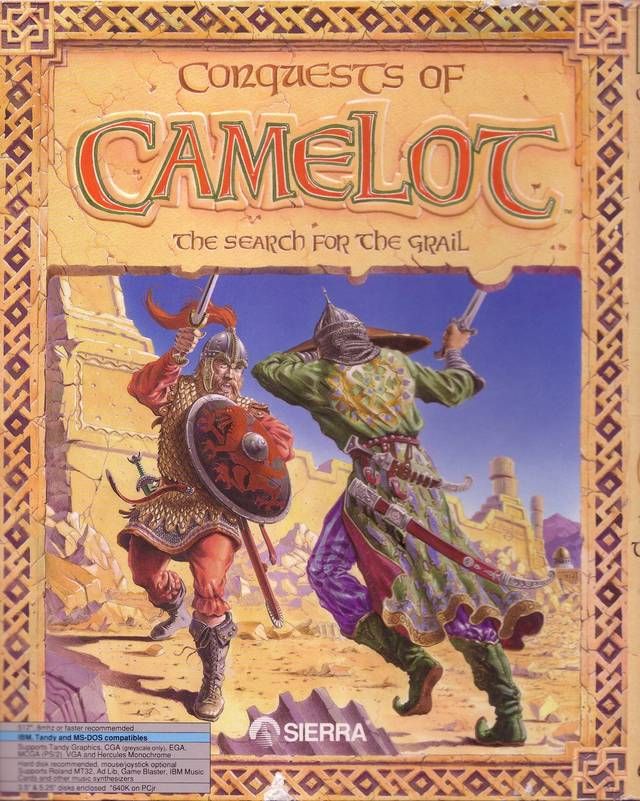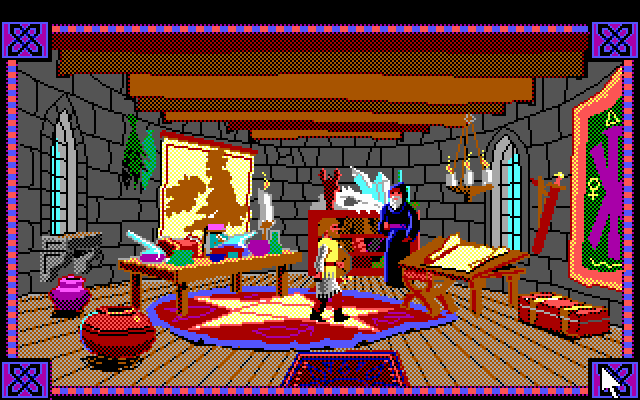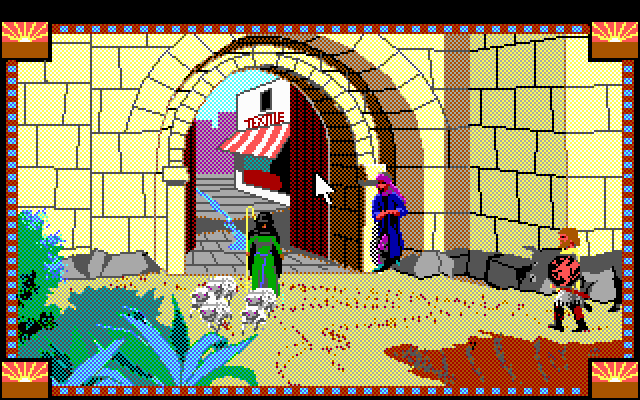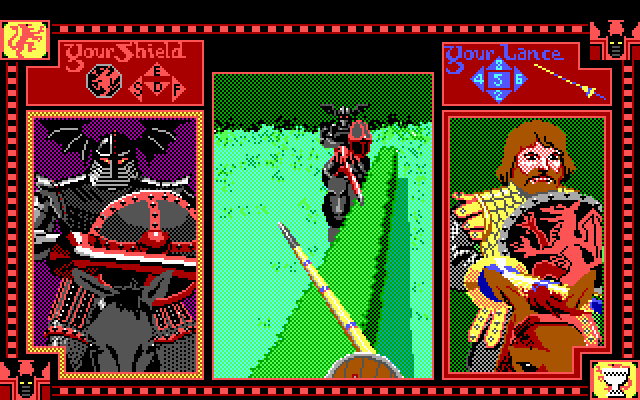Publisher: Sierra On-Line
Designer: Christy Marx

("Religion is one of those things where - if you're specific about it - you're going to get yourself into a mountain of trouble. You have to be very, very careful.” - Peter Molyneux)

Conquests of Camelot: The Search For The Grail is not precisely a religious game - not in the same sense that Bible Adventures or Left Behind: Eternal Forces are religious - but there is far more of a religious component to it than most game publishers would be comfortable with in this day and age. More accurately, it’s a historical game, with a strong emphasis on melding medieval fact and Arthurian legend, and given the undeniable presence of Christianity in both everyday life in the middle ages and in the tales of King Arthur, it seems a given that the game would make direct reference to it. Excising such major themes in any work addressing this era in history, or these characters of lore, would be far more contentious.
The protagonist of Conquests of Camelot is none other than King Arthur himself, and as the title implies, he seeks the Holy Grail. Along the way, he offers up prayer not only to the Christian god but also to Mithras, the Persian diety worshipped by the Romans and absorbed by Christianity around the 5th century C.E. This sort of academic treatment of religious history crops up frequently throughout the game; during his time in Britain, Arthur comes across numerous references to pagan and druidic beliefs, and the majority of his adventure is spent in the Holy Land, covering Gaza, Palestine and Jerusalem. Joseph of Arimathea gets a name-check, as do Cernunnos and Aphrodite. Conquests of Camelot is a historical treatise on religion, disguised as an adventure game.

Of course, the traditional Arthurian figures all make an appearance as well: Lancelot, Guinevere, Merlin, the Black Knight, the Lady in the Lake. For many younger players, myself included, Conquests of Camelot was one of our first introductions to the stories surrounding Arthur, the Grail, and the Knights of the Round Table, and it did a more than adequate job conveying the myths and legends surrounding Camelot in an even-handed and engaging manner. This is not to give the impression that Conquests of Camelot was, by any stretch of the imagination, an “educational game” - and yet it was, without a doubt, highly educational.
Amongst its other achievements, Sierra On-Line was known for being a haven for designer-oriented projects. King’s Quest was Roberta Williams’ baby; The Two Guys From Andromeda, Mark Crowe and Scott Murphy, were responsible for Space Quest; Leisure Suit Larry emerged, polyester-swaddled, from the brain of Al Lowe. Conquests of Camelot, and its Robin Hood-themed sequel Conquests of the Longbow, were designed by Christy Marx and her husband Peter Ledger. This focus on designer rather than promoting a game as a product of an entire studio was as much an oddity in 1989 as it is today, but it somehow made the games that much more personal to play: they were like interactive novels with a verifiable author, rather than the output of a faceless studio simply intent on selling the most games.

Conquests of Camelot: The Search For The Grail was released for Amiga, Atari ST and DOS.
| (Besides designing adventure games for Sierra On-Line, Christy Marx was also an accomplished television writer, including credits for Jem, G.I. Joe, Teenage Mutant Ninja Turtles and Captain Power.) |

"...Mithras, the Persian diety worshipped by the Romans and absorbed by Christianity around the 5th century C.E."
ReplyDeleteWhere did you get that nonsense from? Some idiot, know-nothing author of fiction like Acharya S.?
There's no question that Mithraism and Christianity were early rivals. The fact that Christianity prevailed, while Mithraism did not, implies that one absorbed the other: one became more and more widespread, while the other petered out and eventually vanished. Either all of the followers of Mithras were killed or died out, or they converted. I don't see how this is nonsense. It seems like a fairly logical - and for that matter, a fairly innocent - progression.
ReplyDeleteI have no idea who this Acharya S. person is, so I can't really speak to that. If you're so offended by the things that I say that you feel the need to be rude and insulting to strangers, though, you can stop reading my blog. I won't mind.